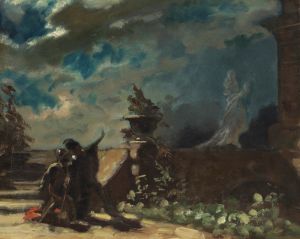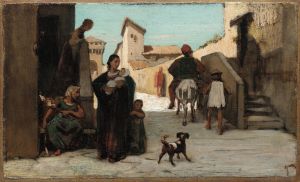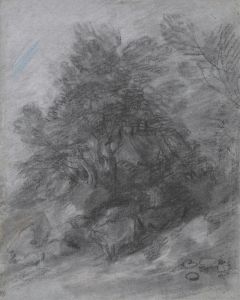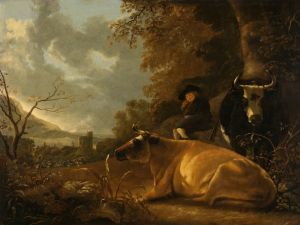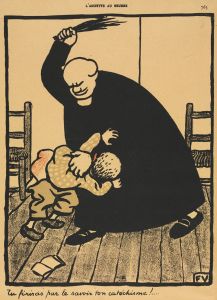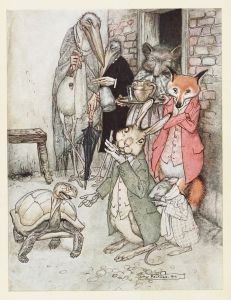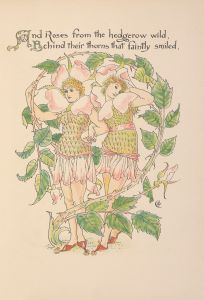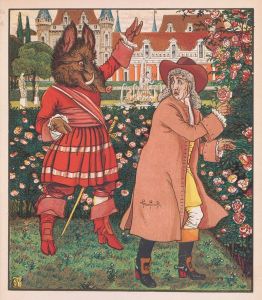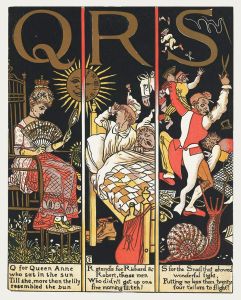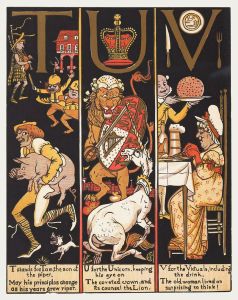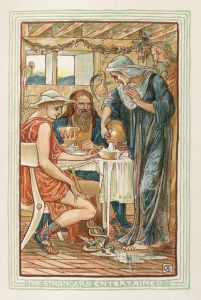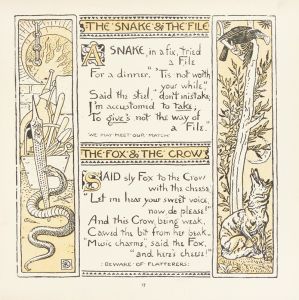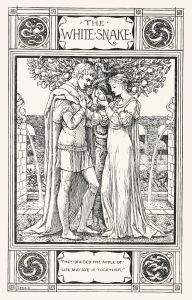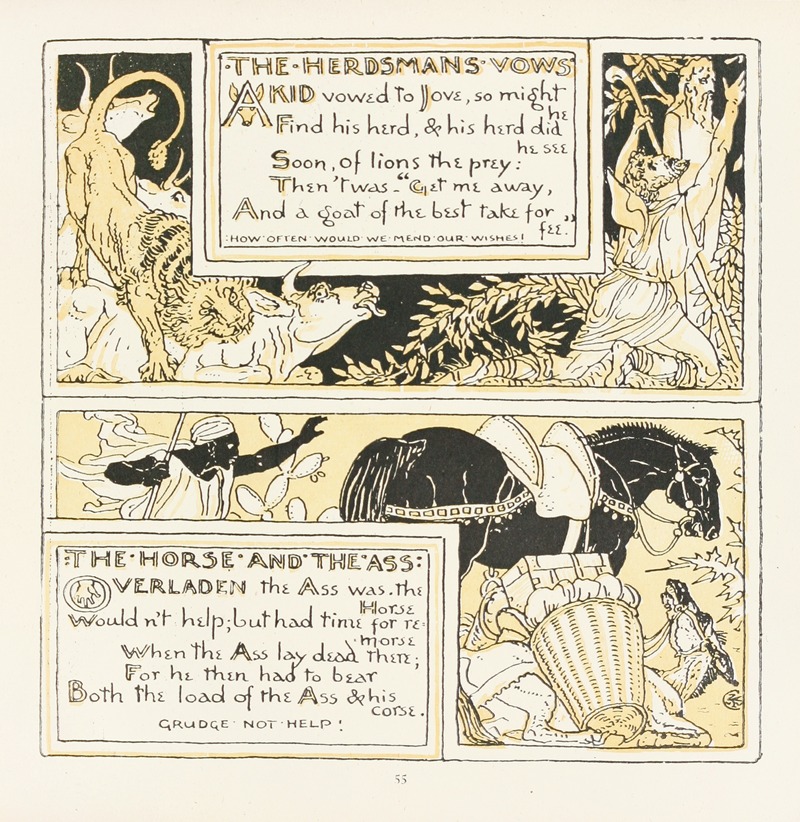
The Herdsman’s Vows, The Horse and the Ass
A hand-painted replica of Walter Crane’s masterpiece The Herdsman’s Vows, The Horse and the Ass, meticulously crafted by professional artists to capture the true essence of the original. Each piece is created with museum-quality canvas and rare mineral pigments, carefully painted by experienced artists with delicate brushstrokes and rich, layered colors to perfectly recreate the texture of the original artwork. Unlike machine-printed reproductions, this hand-painted version brings the painting to life, infused with the artist’s emotions and skill in every stroke. Whether for personal collection or home decoration, it instantly elevates the artistic atmosphere of any space.
Walter Crane (1845-1915) was a prominent English artist and book illustrator, known for his contributions to the Arts and Crafts Movement and his work in children's literature. Among his many works, "The Herdsman’s Vows, The Horse and the Ass" stands out as a notable example of his illustrative style and thematic interests.
Walter Crane was born in Liverpool and was the son of Thomas Crane, a portrait painter and miniaturist. He was apprenticed to the wood-engraver William James Linton from 1859 to 1862, which significantly influenced his development as an illustrator. Crane's early work was heavily inspired by the Pre-Raphaelite Brotherhood, and he later became associated with the Arts and Crafts Movement, which sought to revive traditional craftsmanship and integrate it with fine arts.
"The Herdsman’s Vows, The Horse and the Ass" is an illustration that reflects Crane's interest in fables and moral stories, which were a common theme in his work. This particular piece is part of a series of illustrations for Aesop's Fables, a collection of stories attributed to Aesop, a slave and storyteller believed to have lived in ancient Greece between 620 and 564 BCE. Aesop's Fables are known for their moral lessons, often conveyed through anthropomorphized animals.
Crane's illustration style is characterized by its detailed line work, vibrant colors, and harmonious compositions. He often employed a decorative approach, integrating elements of design and pattern into his illustrations. This style is evident in "The Herdsman’s Vows, The Horse and the Ass," where Crane's meticulous attention to detail and his ability to convey narrative through imagery are on full display.
In "The Herdsman’s Vows, The Horse and the Ass," Crane captures the essence of the fable, which typically involves a moral lesson about the consequences of one's actions and the importance of wisdom and prudence. The illustration likely depicts the key moments of the story, bringing the characters and their interactions to life through expressive poses and facial expressions.
Crane's work on Aesop's Fables was part of a broader trend in the 19th century to produce illustrated books that were both educational and entertaining for children. His illustrations were praised for their ability to engage young readers and convey complex ideas in an accessible and visually appealing manner. Crane's contributions to children's literature and illustration have left a lasting legacy, influencing subsequent generations of artists and illustrators.
Throughout his career, Walter Crane was also involved in various social and political causes, including the promotion of socialism and the labor movement. His art often reflected his beliefs, advocating for social justice and the betterment of society through beauty and craftsmanship.
In summary, "The Herdsman’s Vows, The Horse and the Ass" by Walter Crane is a significant work that exemplifies his illustrative talent and his commitment to creating art that educates and inspires. Through his detailed and decorative style, Crane brought the timeless stories of Aesop's Fables to life, leaving an enduring impact on the world of children's literature and illustration.





